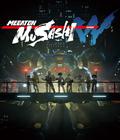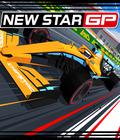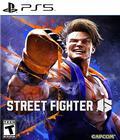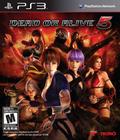The last time Dead or Alive was on a home console was 2005. As the first fighting game on the new console, Dead or Alive 4 was well received. At that point, the series was still an Xbox exclusive, the Xbox 360 had launched a month prior, and Tomonobu Itagaki was the head of the development team. Things have changed dramatically since then. Itagaki is no longer working at Tecmo, and Team Ninja isn't the same group from the launch of the fourth game. The series is also no longer platform exclusive, as evidenced by last year's Dead or Alive: Dimensions on the Nintendo 3DS. The portable game showed that the new developers understood what made the series tick, resulting in what is still one of the best fighting games on Nintendo's year-old system. The same team worked on Dead or Alive 5, which marks the first time that the fighting series has seen a Sony home console since Dead or Alive 2 Hardcore almost 12 years ago.
Dead or Alive 5 is a standard 3-D fighter that is fast and accessible because it only utilizes four face buttons. Players can unleash a flurry of punches and kicks, get in close for devastating throws, and grab an opponent's punch or kick to initiate a counter-attack. The crux of the fighting system lies in their Triangle System, where strikes beat throws, throws take precedence over holds, and holds trump both punches and kicks.
The simplicity ensures that even new players can hold their own against more experienced players, but the accessibility doesn't necessarily mean a lack of depth. Each of the moves comes in at various heights, so your blocks would have to match to defend yourself well. Holds depend on this height system and timing, so those mashing the hold button in hopes of getting lucky will lose matches more often than those who practice the timing. Thus, the game caters well to both casual and dedicated fighters, providing enough to please one camp without alienating the other.
Dead or Alive 5 introduces a few new fight mechanics, one of which had been missing for a while. Side-stepping is now more useful. In the past, side-stepping was for positioning purposes, so you'd step around the fallen fighter just enough so that your next series of attacks lead to a good wall hit. This time, side-stepping is a defensive maneuver from where you can counter-attack without needing to hold first. This not only opens up new defensive techniques, but it also helps satisfy fans who have seen this feature incorporated in other 3-D fighters.
Critical Stun and Critical Burst are improved and new mechanics, respectively, and each has devastating results. When certain combos or moves are executed, the afflicted players enter a brief stunned state where the only thing they can do is to execute a hold at just the right height and time. Once the opponent reaches a point where his health bar begins to flash, the attacker can hit several stun moves that culminate into a burst to stun the opponent. While this may seem like too much of an advantage to give to the attacker, the stuns don't last very long, so you won't be a defenseless punching after what seems like forever.
The Power Blow is the last new mechanic, and it dutifully follows in the grand fighting tradition of a super move with high risk and high reward. Available only when the fighter's health meter is below 50% and flashing red, the Power Blow is only usable once per round. It's a particular move that is held down to charge up, and that hold time gives opponents a perfect opportunity to counter since they can tell when a fighter is about to unleash it. The devastating combo is followed by a push-back move that sends the opponent flying into a wall or object for extra damage.
For those worried about the new mechanics ruining the game balance, you'll be happy to know that the overall feel is still the same. The new techniques, coupled with some general tweaks, make the title feel even faster than before. Fighters spend much less time on their backs, and lots of tech rolls happen to help keep fights going at a faster clip. Fighters seem to utilize more acrobatic moves than before, and they also seem to be swifter on their feet. Though the new techniques and mechanics are always present, they don't seem to be exploitable. With a control scheme that feels just as responsive as it did when the series debuted, the title feels as natural as the other fighting games on the market.
Since the second game, the title has been known for having backgrounds that are also lethal weapons. While it doesn't get as outrageous as the dinosaur-themed lost land of the fourth game, Dead or Alive 5 features a circus level that is made even stranger by there being two versions of it. The other levels are fairly pedestrian by series standards, with fights taking place in alleyways, jungles, labs, rooftops and even the Arctic, to name a few. A number of levels let you use the environment to your advantage. In one of the houses, for example, you can knock opponents through walls before knocking them to a courtyard below. The electrified six-sided ring provides explosions each time the ropes are touched. On the rooftop, a subway car can derail and hit you (or your opponent). The circus has areas that can trigger a tiger pouncing on you, or your opponent can be launched by a jack-in-the-box. While the damage caused by the environment isn't enough to be fatal, it lends to the spectacle in ways that few other fighting games have done. There is the option to turn off these hazards, if you desire.
There is a new mechanic hidden in the backgrounds, and that's the Cliffhanger moment. Some of the arenas are destructible enough to lead to permanent alterations. For example, enough damage to the beams in the skyscraper fight can lead to the whole level tilting and eventually collapsing. During the collapse, you have the opportunity to inflict more damage to the opponent with a throw or a strike. It isn't a guaranteed hit, as the opponent can block it. Like the other environmental falls in the game, the damage isn't enough to kill, but it makes the environmental hits more flashy and involving.
The game doesn't boast the largest roster — there are 24 fighters compared to 26 for Dead or Alive: Dimensions — but it is still a very sizeable list. Minus the bosses from the first three games, just about every fighter from the previous games makes a comeback here, some of them with a few new moves. Replacing the bosses and clone characters of past games are five fighters, three of whom will be familiar to Sega fans.
Mila is the new original female to the group, and as a fighter with an MMA background, she feels like a mix between Hitomi and Tina. Her strikes are more straightforward and purposeful than flashy, but they can still inflict quite a bit of damage. She specializes in holds and limb breaks rather than throws, but her grappling arsenal is varied, making her a nice fit for players who like to mix things up. Rig falls in line with the other men in the game in that he's slower than the females, but he makes up for it with harder hits. His taekwondo style makes him proficient with various kicks, and he can unleash leg combinations that rival Zack's in terms of speed and strength.
As nice as the other two characters are, the three other fighters may get more attention since they're from Sega's Virtua Fighter series. Sarah Bryant, Pai Chan and Akira Yuki make cameo appearances, and all of them play exactly like they do on their native game. Sarah can unleash a flurry of moves in a manner matched only by Kasumi and Ayane in terms of speed. Akira has powerful but calculated moves and tends to be efficient when it comes to movement while Pai plays out like most of the females in the game with flowing combos. Their default play styles match up well with the fighting style of Dead or Alive. The matches are so well done that they feel right at home, and one has to wonder if this is a hint at a possible Dead or Alive/Virtua Fighter crossover game.
The offline games features modes that are now series standards. Following the debut of Story mode in Dead or Alive: Dimensions, the one featured here plays out like an actual narrative, which is still a rarity in fighting games. Following the storytelling style of the more recent Mortal Kombat and the series' own portable predecessor, Dead or Alive 5 has you playing as the whole cast two years after the destruction of the Tri-Towers by Helena, an act that dissolved her father's company DOATEC in the process. With a new DOATEC formed and a new purpose in mind, she decides to hold a fifth Dead or Alive tournament to garner public goodwill. Meanwhile, the biological weapon known as Alpha-152 wasn't properly disposed of, leaving Kasumi and the rest of the ninjas with the task of finding and stopping it.
The story is really trying to tell two tales at the same time. The Alpha-152 story arc and the ninjas act as bookends to the tale while the middle of the story deals with the tournament and the fighters in the game. The tournament story arc is more interesting to watch because it believably weaves in a majority of the roster. There's also a logical direction to the story since the game decides on a tournament winner instead of waiting for the sequel to arbitrarily announce one of the fighters as a victor. It doesn't mean that the tournament story is very good, especially since it doesn't resolve things for everyone. Meanwhile, the Alpha-152 arc makes a little more sense than the previous arcs, mostly because it is presented as an actual tale as opposed to a series of vignettes that appear after you finish the Arcade mode for certain characters. It isn't gripping material, but it shows that there is movement toward giving fighting game fans more than just the fights.
Just like Dimensions, the Story mode acts as primer in lieu of a full-fledged tutorial mode. While it doesn't walk you through basic movement, it teaches you about basic and advanced techniques via bonus challenges. The challenges range from basic ones, like delivering five punches or kicks, to more difficult ones, like initiating a 10-hit juggle combo. Completing each of the bonus objectives rewards you with titles, but the good news is that their completion isn't necessary for advancement.
One element of the mode that could have used some work is the pacing. The story is told from the perspectives of several characters through matches focused on each fighter. It works well to give the player a chance to concentrate on one fighter at a time, but it does so at the expense of cohesion. Because the fighters intersect at several different points in the story, you'll often travel forward and backward in the story, creating a bit of a disconnect if you're following the tale. It also means seeing several different cut scenes multiple times from the same angle and delivery, giving you a brief sense of déjà vu. Had it approached the whole thing as two separate story lines or simply played out chronologically, it might have worked a little better.
The rest of the game modes haven't changed much from the previous titles. If you've played Dead or Alive: Dimensions, you'll be very familiar with these modes. Both Arcade and Time Attack modes are gauntlets that are several levels long with randomized enemies and no set boss at the end. There are seven different difficulty levels to contend with instead of five, though the final two need to be unlocked, and they're both open to solo and tag-team play. For solo fights in Survival mode, you must survive multiple difficulty levels, each increasing in the number of combatants. Versus mode is exactly what you'd expect while Training gives you lots of data regarding each move. Then there's Spectate, which lets you watch replays of your Versus fights and a CPU-versus-CPU match. Participation in these modes leads to some unlockable content in the form of two characters (Pai and Alpha-152), but what is given out in abundance are titles, two of which you can use as your fight card in online bouts.
One area of disappointment is that some game modes never made it out of Dimensions. In particular, Tag Challenge is gone. Because it had a set structure of opponents you had to whittle through, its absence is noticeable.
Over the years, the online performance of the Dead or Alive games has been erratic. For every smooth match you find, you'll find an equal number of matches where the action stutters badly. The situation is improved this time around but only marginally. Throughout the review period, with the game having been available to the public for some time, roughly 20-25% of the online games had enough lag to cause the match to stutter. It wouldn't jump around missing moves, but the frequent pauses make it frustrating to play. The rest of the time, however, the game was smooth, almost as if you were playing the game offline. It isn't a perfect track record, but it is certainly better than the previous title since there isn't a heavily graphical lobby eating up the bandwidth. You can also save replays of those fights for future viewing, though doing so means you lose the ability to do a rematch since the saving process takes up to 20 seconds, the time limit before the game kicks you back to the online menu.
New to the game is the ability to tag all of your opponents so you can easily call them out for a fight. It's a nice feature since it means you can keep this game-specific list separate from your system friends list. There's also Facebook functionality so you can post your accomplishments to the world, though it is doubtful that your friends would appreciate all the spam generated by the game. Unfortunately, this is another title that uses the dreaded Online Pass, so those who buy it used or decide to rent it had better hope that the online performance is patched so that lag-filled matches become a rarity.
The graphics are mostly good, with some very subtle changes compared to the last home console game. The character models are well done. There's less clipping than before, especially when it comes to the hair colliding with the body, and the animations are smooth. The backgrounds are just as detailed, and the frame rate stays steady even during the most chaotic situations. The long hiatus from home consoles introduced some positive aspects. Long fights produce patches of dirt on the characters and sweat that drips from their bodies. It gives the game more realism when the fighters aren't flawless after a grueling fight. Work on anti-aliasing has also been done, so the hair looks less jagged than before. The same can't be said for the backgrounds, however, as jaggies are visible but are only rampant in a few cut scenes.
Some of the characters have had their looks tweaked — and not necessarily for the better. Tina looks much slimmer, making her almost blend in with the other characters instead of standing out due to having a more toned frame. The same goes for the big guys like Bayman and Bass, who look less stockier than before. In Bayman's case, he loses his classic beret, making him look like Chris Redfield from Resident Evil. The other thing people will notice has to do with the infamous breast physics. There's a little bit more bounce to them when compared to the fourth game, but now each breast has independent movement. It looks funny but no less mesmerizing. Oddly enough, these physics have been toned down on both Pai and Sarah, so those who were expecting them to adapt to the DOA style will either be relieved or disappointed.
As for the sound, it is also mostly solid. Save for a few cut scenes where the music doesn't fit the scene, most of the tunes are good, and some of the menu music is even memorable. The effects carry the right amount of impact, so every hit and wall bounce hits as hard as it should. As a bonus, the guest characters come with their own effects, so the jet whoosh after a few of Sarah's kicks is still intact. The game carries on the tradition of having both English and Japanese language tracks, and while the English actors aren't necessarily bad, the Japanese feels right at home. Only the Virtua Fighter characters ignore the language settings, so there's no way you'll hear Akira in English or Sarah suddenly taunting in Japanese. The only problem with the Japanese track comes in the subtitles, where some of the background lines from characters don't get subtitled. Thankfully, some of those lines are repeated and translated later, but the absence makes a few scenes slightly confusing to watch. The sound options, particularly for language, don't save, so players who really hate the English voices have to remember to go into the options and change it every single time.
Dead or Alive 5 is certainly one of the better games that has come out since the fighting game genre made a comeback. While the core of the fighting system remains the same, the new additions give it a much-needed boost without ruining the balance. Though it could still use some improvements, the presentation is a little better than its previous home console incarnation, and the online play is also smoother. The modes may be familiar, but the differences stand out in a good way, and the inclusion of cameos from other games feels more natural than gimmicky. In the end, the only reason to not pick up this game right away is if you're already deeply entrenched in another fighting game and don't feel like switching from it soon. For everyone else, Dead or Alive 5 is a fighting title that should be in your game library.
Score: 8.5/10
More articles about Dead or Alive 5











 Returning for another knock-out round, Dead or Alive 5 marries its signature fighting style with MMA fighting techniques with a fun twist for players new and old.
Returning for another knock-out round, Dead or Alive 5 marries its signature fighting style with MMA fighting techniques with a fun twist for players new and old.





























































